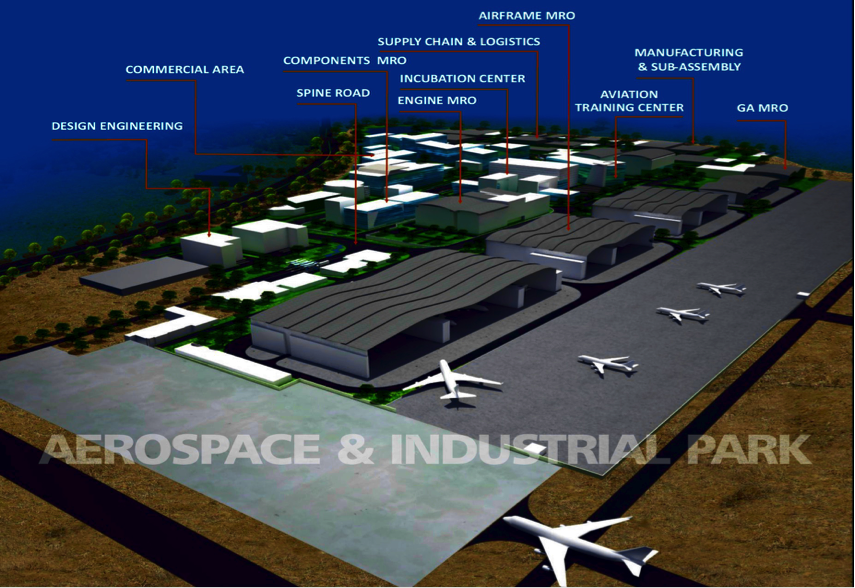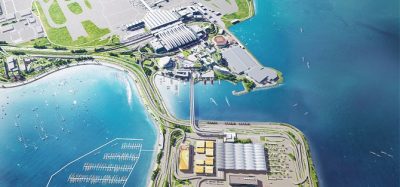Aerotropolis 5: A look at India
- Like
- Digg
- Del
- Tumblr
- VKontakte
- Buffer
- Love This
- Odnoklassniki
- Meneame
- Blogger
- Amazon
- Yahoo Mail
- Gmail
- AOL
- Newsvine
- HackerNews
- Evernote
- MySpace
- Mail.ru
- Viadeo
- Line
- Comments
- Yummly
- SMS
- Viber
- Telegram
- Subscribe
- Skype
- Facebook Messenger
- Kakao
- LiveJournal
- Yammer
- Edgar
- Fintel
- Mix
- Instapaper
- Copy Link
Posted: 12 April 2016 | Dr Sarkar | No comments yet
Fuelled by its booming economy and rapidly rising personal incomes, India’s commercial air travel has grown substantially over the past decade. Since India’s airport infrastructure was ill-equipped to accommodate such dramatic growth, the Ministry of Civil Aviation set about a two-fold process…
Firstly, private-sector capital and leadership were brought in through public-private partnerships to modernise and expand existing major airports and build new airports.
Secondly, airport city and aerotropolis models of development were encouraged to generate commercial development at and around India’s airports to foster economic development, increase their non-aeronautical revenues, and further boost passenger and cargo flows.
India’s GMR Group headed the public-private partnership to modernise and expand Delhi International Airport (under the consortium name Delhi International Airport Limited (DIAL)). This firm also constructed the greenfield airport at Hyderabad (Hyderabad International Airport Limited (HIAL)), which opened in March 2008. These two airports capture India’s 21st century approach to airport city and aerotropolis development1.
The Delhi Aerotropolis
Delhi’s International Airport, which spans 5,000 acres, was handed over to GMR in May 2006. In short order, plans were implemented for third runway at DIAL and a new integrated passenger terminal (Terminal 3) capable of handling 30 million passengers annually with room to expand. Terminal 3 is state-of-the-art in every respect, providing modern passenger amenities and services along with 55 aircraft contact stands and 20 remote stands.
Departing and transfer passengers will have a significant complement of retail and service options to experience measuring up to those at terminals such as Singapore Changi, Frankfurt, and Hong Kong International, including a 300-room, four-star passenger transit hotel connected to the terminal.
GMR (Hyderabad) Aerospace & Industrial Park
With more aerospace and industrial players looking to set up their operations in India, there was a need for specialised infrastructure providers to support aerospace and industrial growth. Leveraging GMR Group’s experience in highways, energy and airport projects, the group presented the ‘GMR Aerospace & Industrial Park’, an aerospace and industrial cluster as part of GMR Hyderabad International Airport2.
The site location of GMR Aerospace and Industrial Park has been strategically chosen with emphasis on connectivity. The Park is well connected by air, road and rail, including robust connectivity to ports. This strategic location offers businesses an easy access to suppliers, enabling efficient supply chain management. These linkages present the benefits of faster turn-around time and maximisation of productivity.
Why GMR Aerospace & Industrial Park?
GMR Aerospace & Industrial Park provides ‘ready-to-use’ industrial infrastructure allowing companies to focus on their core business (see image below). GMR Aerospace & Industrial Park offers the flexibility of choosing land within Special Economic Zone (SEZ) for businesses looking to serve foreign markets, and land in Domestic Tariff Area for businesses looking to serve Indian market3.
By virtue of the park being housed within RGIA, the Aerospace & Industrial Park enjoys greater security. Supply of utilities like power and water are highly reliable. The park also enjoys the complete airport ecosystem like availability of hotel, reliable and affordable transport, emergency services, security, etc.
The following advantages present a strong case for GMR Aerospace & Industrial Park’s vision of creating an aerospace and industrial cluster in the region.
- Runway access
- Ready-to-use infrastructure
- Benefits of Special Economic Zone (SEZ) and Free Trade Zone (FTZ)
- Significant presence of aerospace companies and SMEs in Hyderabad
- Benefits of being part of a cluster
- Attractive lifestyle at low cost
- Excellent location and connectivity
- Robust talent pipeline.
References
- http://www.airport-technology.com/projects/indira-gandhi-international-airport/
- http://www.hyderabad.aero/aerospacepark.aspx
- www.hyderabad.aero/filedownload.aspx?file=GMRASP…pdf&type=pdf
About the author
After obtaining his Master in Science from the Madras University, and Doctorate Degree in Geochemistry and Earth Sciences from the University of Wales, Dr. A N Sarkar worked for more than four decades in the Petrochemicals-related fields, R& D, Environment, Central Ministries, External Donor Agencies, and Academics. He served as a Chair Professor-National Agricultural Bank for Rural Development (NABARD); Professor, University of Petroleum and Energy Studies.
More recently, Dr. Sarkar has worked as a Senior Professor (International Business) and Dean (Research) in the Asia-Pacific Institute of Management, New Delhi. He has also served as convener and member secretaries in various Inter-Ministerial Committees on ‘Natural Resources Management’, ‘Sustainable Development’ and ‘Renewable Energy’. Dr. Sarkar has so far authored 22 Books and more than 100 research papers, published in reputed national and international journals.
His books include: Energy Security, Global Climate Change & Sustainable Energy Development, Emission Trading & Carbon Management and Petro-Economics (Pentagon Press, New Delhi); Global Climate Economics (LAP, Publishing Corporation, Germany); CSR in Mining Industry (LAP, Publishing Corporation, Germany), Green Banking, Microfinance, Eco-Industrial Clusters (Atlantic Publishing House), Environmental Economics, Energy, Environment and Global Climate Economics (Discovery Publishing).
Click here to contact Dr Sarkar.


















